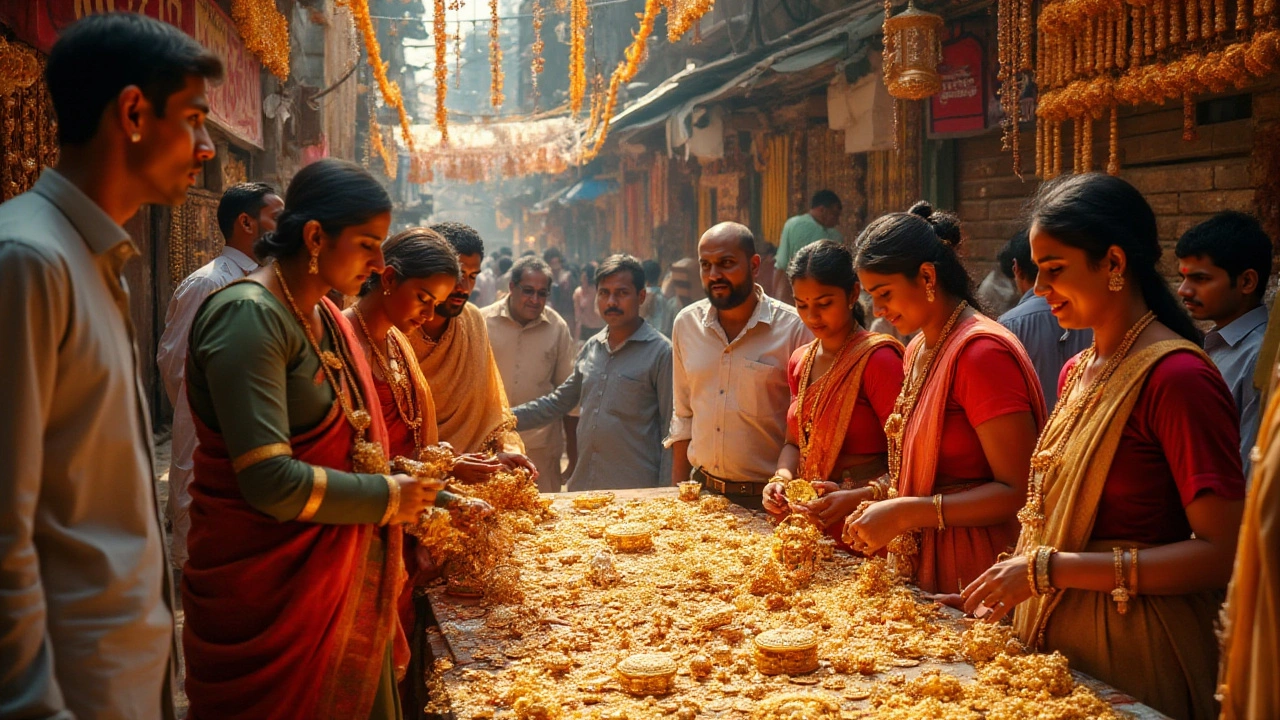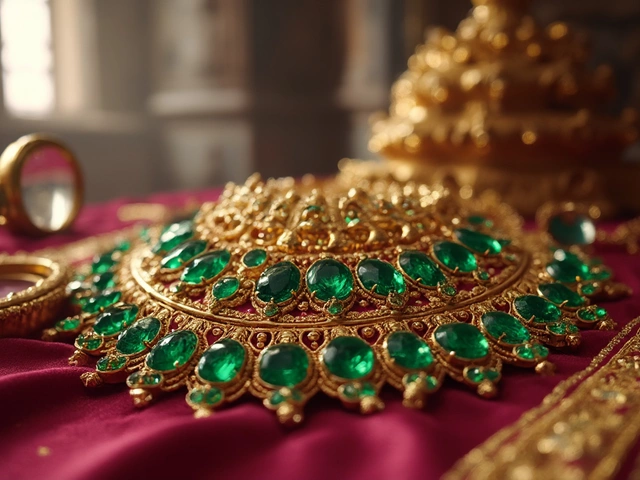Indian Gold Market: What’s Happening in 2025?
If you’re scrolling through the news and see gold prices jumping up and down, you might wonder whether now is a good time to buy. The Indian gold market moves fast, but the basics stay the same: price depends on global rates, the rupee’s strength, and local demand for weddings and festivals. Knowing these factors helps you avoid overpaying and makes your purchase feel confident.
Understanding Gold Prices in India
First, check the spot price on a trusted site. That’s the raw price per 10 grams before taxes and making charges. In India, the government adds a 3 % GST and a small import duty, so the final cost you see in a shop will be higher. The most common purities are 22K (916) and 24K (999). 22K gold is softer, so it’s cheaper and used a lot for jewelry, while 24K is pure gold and mainly sold as bars or coins.
Season matters too. Prices often dip in the months after major festivals like Diwali and before the wedding season kicks off in October‑November. Historically, the months of May to July have shown lower demand, which can translate into better deals. Keep an eye on the RBI’s gold import data; a drop in imports usually means tighter supply and higher local prices.
Another piece of the puzzle is the BIS hallmark. Every legitimate gold piece carries a stamp that tells you the purity, the year of certification, and the manufacturing unit. Look for a ‘916’ mark for 22K and a ‘999’ for 24K. If the hallmark is missing or faded, ask the seller for a certificate before you pay.
Smart Ways to Buy and Keep Gold Safe
When you buy, compare three things: the gold price per gram, the making charge, and the certification fee. Some jewelers advertise low gold rates but add high making charges, which can erase any savings. Online platforms often list a clear breakdown, making it easier to spot hidden costs.
Consider buying in small, regular amounts instead of one big purchase. This method, called rupee cost averaging, smooths out price swings and reduces the risk of buying at a peak. If you’re thinking about investment, gold bars or coins with a clear BIS hallmark are easier to resell than heavily designed jewelry.
Storage matters. A home safe works if you’re disciplined, but a bank locker is more secure and often cheaper than insurance for a few grams. If you keep gold at home, wrap it in a soft cloth, place it in a sealed pouch, and store it in a dry, temperature‑stable spot to avoid tarnish.
Finally, remember resale value isn’t just about the metal. Pieces with a recognized brand, classic design, and clean hallmarks fetch higher prices. Keep all purchase receipts and certificates—they’re proof of authenticity and help you get a fair price when you sell.
Bottom line: stay updated on spot rates, watch the GST and making charges, verify the BIS hallmark, and plan when to buy based on seasonal trends. Follow these steps, and you’ll navigate the Indian gold market like a pro, whether you’re buying for an upcoming wedding or building a long‑term investment portfolio.
Understanding Why Gold is More Affordable in India: Insights into Temple Jewellery Pricing
Gold pricing in India, particularly with respect to temple jewellery, tends to be more affordable than in many other parts of the world. This is due to a variety of economic, cultural, and historic factors that influence the gold market in India. Understanding these dynamics can benefit both collectors and investors who are interested in the global gold trade. The cultural importance of gold in India, combined with intricate traditional designs in temple jewellery, plays a significant role in its market pricing.





